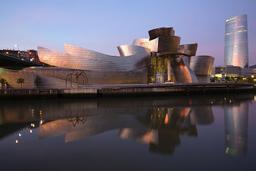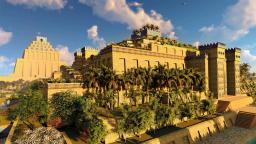The Mughal Empire, reigning over the Indian subcontinent from the early 16th to the mid-19th century, introduced not only a rich tapestry of art, culture, and tradition but also a distinctive architectural style. Characterized by its domes, minarets, and the extensive use of decorative motifs, this style is a harmonious blend of Islamic, Persian, and Indian architecture. Dive into the top six marvels of Mughal architecture in India that continue to fascinate the world with their timeless allure.
Top 6 Mughal Architectural Wonders in India
History • 9 Aug, 2023 • 38,879 Views • ⭐ 5.0
Written by Anand Swami

Taj Mahal (Agra)

The Epitome of Love:
The Taj Mahal, commissioned by Emperor Shah Jahan in memory of his beloved wife Mumtaz Mahal, stands as the most iconic representation of Mughal architecture. Constructed from pristine white marble, this mausoleum symbolizes eternal love. Its domed central tomb, flanked by four slender minarets and adorned with intricate marble lattice work, showcases architectural mastery. The encompassing gardens and waterways magnify its entrancing beauty.
Red Fort (Delhi)

The Majestic Powerhouse:
The Red Fort, or Lal Qila, was established by Shah Jahan and served as the primary residence of the Mughal emperors for nearly 200 years. Crafted predominantly from red sandstone, the fort houses a sequence of palatial halls, mosques, and gardens. While its massive walls fortified the empire, the interiors resonate with the dynasty's grandeur and opulence. The fort's Rang Mahal or "Palace of Colours" was specially constructed for the emperor's main wife and was adorned with a stream running through its center, showing the ingenious water management system of that era.
HISTORY QUIZ • 10 QUESTIONS • 2 MINS
We've got a History quiz for you!
TAP TO PLAY

Fatehpur Sikri (Uttar Pradesh)

The Short-lived Capital:
Commissioned by Emperor Akbar, Fatehpur Sikri was the Mughal capital for a brief span, only to be abandoned due to water scarcity. The city, however, immortalizes Akbar's vision. Within its bounds lie architectural gems such as the Buland Darwaza (Victory Gate), Jama Masjid, and the tomb of Salim Chishti, representing the pinnacle of Mughal design. Notably, the city's architecture is a blend of various regional styles, with the Diwan-i-Khas or Hall of Private Audiences showcasing a unique central pillar with a square base and an octagonal shaft.
Humayun’s Tomb (Delhi)

A Predecessor to the Taj:
Before the construction of the Taj Mahal, Humayun’s Tomb stood as its precursor. Commissioned by Humayun's wife, Bega Begum, in the 16th century, the tomb nestles amidst a geometrically precise Persian-style garden. Its structure, combining red sandstone with white marble, set a precedent for the architectural wonders that followed in the Mughal era. Interestingly, the tomb was the first garden-tomb on the Indian subcontinent, laying the foundation for garden tombs to become a staple in Mughal architecture.
Jama Masjid (Delhi)

The Grand Mosque:
Shah Jahan's architectural marvel, Jama Masjid, is India’s largest mosque. Located centrally in Delhi, it's crafted from red sandstone and complemented by white marble. Its vast courtyard, capable of accommodating over 25,000 worshippers, is bordered by two towering minarets that offer panoramic city views. Constructed between 1650 and 1656, the mosque was built using 6,000 workers and is prominently elevated, making it a dominant presence in the old city skyline.
INDIA QUIZ • 10 QUESTIONS • 2 MINS
We've got a India quiz for you!
TAP TO PLAY

Agra Fort (Agra)

The Fortress of Royalty:
Situated a stone's throw from the Taj Mahal, Agra Fort is a sprawling complex that previously served as the main residence for Mughal emperors before the capital transitioned to Delhi. Its formidable red sandstone walls conceal a labyrinth of structures, including the Sheesh Mahal (Glass Palace) and Diwan-e-Aam (Hall of Public Audience). Its location by the Yamuna River and detailed design cement its status as a Mughal masterpiece.
Conclusion
At its zenith, the Mughal era bestowed upon India an unmatched legacy of architectural wonders. These edifices are more than just bricks and mortar; they narrate tales etched in stone and marble, echoing the ambitions, passions, and grandeur of Mughal emperors. Amid modern skyscrapers that dominate cityscapes today, these Mughal treasures stand as gentle reminders of India's rich and illustrious past.
Test your General Knowledge! Visit:
https://4123.play.quizzop.com/general-knowledge-quiz/category
GENERAL KNOWLEDGE QUIZ • 10 QUESTIONS • 2 MINS
We've got a General Knowledge quiz for you!
TAP TO PLAY

Rate this article
Other articles you may like
6 Traditional Dances from Africa and Where to Witness Them
History • 24 Aug, 2023 • 39,444 Views

5 Iconic Museums of Modern Art in the World
History • 14 Aug, 2023 • 64,141 Views

Top 5 Cities with Impressive Streets in the World
History • 14 Aug, 2023 • 62,130 Views

7 Architectural Wonders of the Middle East
History • 14 Aug, 2023 • 63,261 Views

The 5 Most Ancient Temples in Tamil Nadu
History • 9 Aug, 2023 • 42,197 Views





